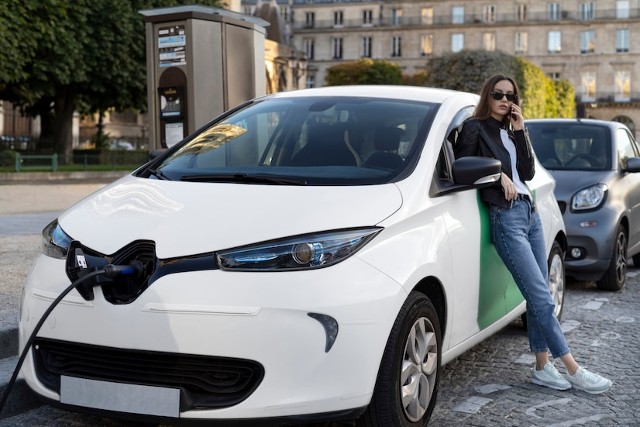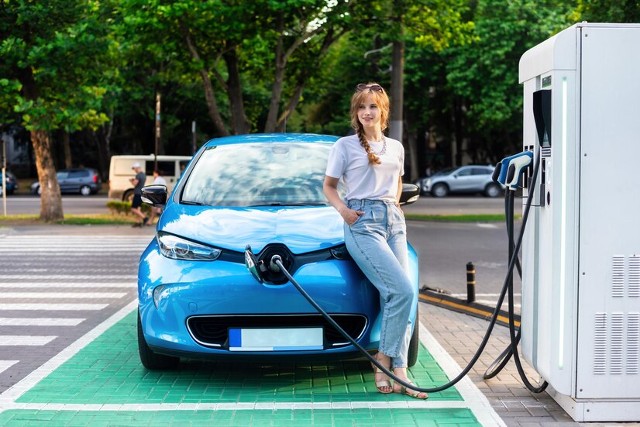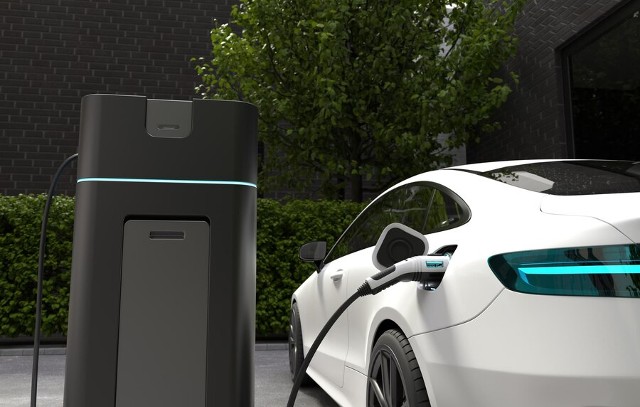As you stroll down the bustling streets of your city, you notice an increasing number of electric vehicles gliding silently by. Coincidentally, you find yourself pondering the remarkable progress that has been made in the realm of sustainable transportation.
But what is truly driving this revolution? How are we paving the way to a future where electric vehicles are the norm rather than the exception? The answer lies in the untapped potential of EV charging infrastructure, which holds the key to unlocking a sustainable future.
The Rise of Electric Vehicles
The rise of electric vehicles has revolutionized the transportation industry, paving the way for a more sustainable and environmentally-friendly future. With the increasing concern over climate change and the need to reduce greenhouse gas emissions, governments around the world have been implementing various initiatives to promote the adoption of electric vehicles (EVs). These initiatives include tax incentives, rebates, and grants for EV purchases, as well as the development of charging infrastructure.
One of the key components in supporting the growth of electric vehicles is the establishment of EV charging stations. These stations provide the necessary infrastructure for EV owners to charge their vehicles conveniently and reliably. Governments have been actively investing in the installation of charging stations, both in urban areas and along major highways, to ensure that EV owners have easy access to charging facilities.
In recent years, there’s been a significant increase in the number of EV charging stations globally. According to a report by the International Energy Agency, the number of public charging points worldwide reached over 1 million in 2019, a 60% increase from the previous year. This growth is expected to continue as governments and private companies collaborate to expand the charging infrastructure network.

The availability of EV charging stations is crucial in addressing one of the key concerns of potential EV buyers – range anxiety. Knowing that there are sufficient charging stations conveniently located provides reassurance to EV owners that they can easily charge their vehicles during their daily routines or on longer journeys. This, in turn, encourages more people to make the switch to electric vehicles, further driving the transition towards a sustainable future.
To support the growth of electric vehicles, governments need to continue investing in the development of charging infrastructure, ensuring its accessibility and reliability. This includes not only increasing the number of charging stations but also implementing smart charging solutions and promoting the interoperability of charging networks. By doing so, governments can create an environment where electric vehicles are a viable and attractive transportation option for individuals and businesses alike.
The rise of electric vehicles, coupled with government initiatives and the expansion of charging infrastructure, holds the promise of a cleaner, greener, and more sustainable future for transportation.
The Importance of EV Charging Infrastructure
With the increasing adoption of electric vehicles, the establishment of a robust and accessible EV charging infrastructure is crucial for ensuring the widespread adoption and usability of these vehicles. The role of the government in developing this infrastructure can’t be overstated.
Governments play a vital role in facilitating the expansion of EV charging networks by implementing supportive policies and regulations. They can provide financial incentives, tax breaks, and grants to encourage the private sector to invest in charging infrastructure. Furthermore, governments can collaborate with utility companies to ensure the availability of adequate power supply for charging stations.
Investment opportunities in EV charging infrastructure are also on the rise. As the demand for electric vehicles continues to grow, there’s a need for increased investment in charging infrastructure to meet the charging needs of EV owners. This presents an opportunity for businesses and investors to enter the market and capitalize on the growing demand. Charging infrastructure companies, manufacturers of charging equipment, and renewable energy companies are among the potential beneficiaries of this investment opportunity.
To fully realize the benefits of electric vehicles and transition to a sustainable future, it’s essential to prioritize the development of an extensive and efficient EV charging infrastructure. Governments must take an active role in supporting and incentivizing the private sector to invest in charging infrastructure. Simultaneously, businesses and investors should seize the investment opportunities presented by the growing demand for charging infrastructure.
Advancements in EV Charging Technology
Advancements in EV charging technology have revolutionized the way electric vehicles are powered and charged, making it more efficient and convenient for EV owners. Two key advancements that have gained significant attention are wireless charging and fast charging.
Wireless charging is a game-changer in the EV industry. It eliminates the need for physical connections between the charger and the vehicle, allowing for a more seamless and effortless charging experience. By using electromagnetic fields, wireless charging systems transfer energy from a charging pad on the ground to a receiver pad on the EV, enabling charging without the hassle of cables or plugs. This technology is still in its early stages but holds immense potential for widespread adoption in the coming years.

On the other hand, fast charging has gained popularity for its ability to significantly reduce charging times. Traditional charging methods can take hours to fully charge an EV, but fast charging solutions can deliver a substantial charge in a matter of minutes. With the advancement of fast charging technology, EV owners can now enjoy shorter charging times, making long-distance travel more feasible and convenient.
These advancements in EV charging technology address the concerns of range anxiety and charging time, making electric vehicles a more viable option for everyday use. As technology continues to evolve, we can expect even more innovative solutions that will further improve the charging experience for EV owners.
The Benefits of Widespread EV Adoption
As more electric vehicles are powered by advanced charging technology, the widespread adoption of EVs brings numerous benefits to individuals, communities, and the environment.
One of the key advantages of widespread EV adoption is the potential for significant economic growth. According to a study by the International Council on Clean Transportation, the global market for electric vehicles is estimated to reach $567 billion by 2025. This growth is expected to create new job opportunities in the manufacturing, installation, and maintenance of EV charging infrastructure.
In addition to economic growth, widespread EV adoption also has a positive environmental impact. Electric vehicles produce zero tailpipe emissions, reducing air pollution and improving air quality in urban areas. According to a report by the Union of Concerned Scientists, the adoption of EVs could reduce greenhouse gas emissions by 30% by 2030. Additionally, EVs have the potential to reduce dependence on fossil fuels and decrease the carbon footprint of transportation.
Moreover, the widespread adoption of EVs can also lead to the development of a more sustainable energy ecosystem. EVs can serve as a valuable storage resource for renewable energy, helping to balance the grid and increase the integration of renewable sources. This can lead to a more reliable and resilient energy system, reducing the need for expensive infrastructure upgrades.
Challenges in the Transition to Electric Mobility
The transition to electric mobility presents a range of challenges that must be addressed to ensure a smooth and successful shift towards a sustainable transportation future.
Two key challenges in this transition are government incentives and range anxiety.
Government incentives play a crucial role in promoting the adoption of electric vehicles (EVs). These incentives can include financial incentives such as tax credits or subsidies, as well as non-financial incentives like access to carpool lanes or free parking. However, the effectiveness of these incentives varies across different regions.
To overcome this challenge, governments should evaluate and update their incentive programs regularly to ensure they’re providing sufficient support to encourage EV adoption.
Another challenge is range anxiety, which refers to the fear of running out of battery power and being stranded without access to charging infrastructure. While the range of EVs has significantly improved over the years, it remains a concern for potential EV buyers.
To address this challenge, it’s essential to expand the charging infrastructure network, particularly in residential areas, workplaces, and public spaces. This will alleviate range anxiety and provide EV owners with the confidence to rely on their vehicles for daily commutes and long-distance travel.
To find out more, understand the EV charging FAQ below.
Frequently Asked Questions
What Are the Different Types of Electric Vehicle Charging Stations Available?
There are different types of electric vehicle charging stations available, including wireless charging and fast charging options. These stations provide convenient and efficient ways to charge your electric vehicle, promoting sustainability and reducing carbon emissions.
How Long Does It Typically Take to Charge an Electric Vehicle?
Charging an electric vehicle typically takes several hours, but the exact time depends on various factors, such as the battery capacity, charger speed, and current charge level.
Are There Any Financial Incentives or Government Subsidies Available for Installing EV Charging Stations?
Yes, there are financial incentives and government subsidies available for installing EV charging stations. These incentives and subsidies aim to support the transition to electric vehicles and promote sustainable transportation infrastructure.
Can Electric Vehicles Be Charged at Home, or Do They Require Specialized Charging Infrastructure?
You can charge electric vehicles at home using a standard electrical outlet. However, specialized infrastructure like dedicated charging stations can offer faster charging times and more convenience.
What Measures Are Being Taken to Ensure the Availability of EV Charging Stations in Rural or Remote Areas?
To ensure availability of EV charging stations in rural or remote areas, measures are being taken. Challenges in implementing charging infrastructure in rural regions are being addressed with innovative solutions and partnerships, promoting sustainable transportation options for all.


